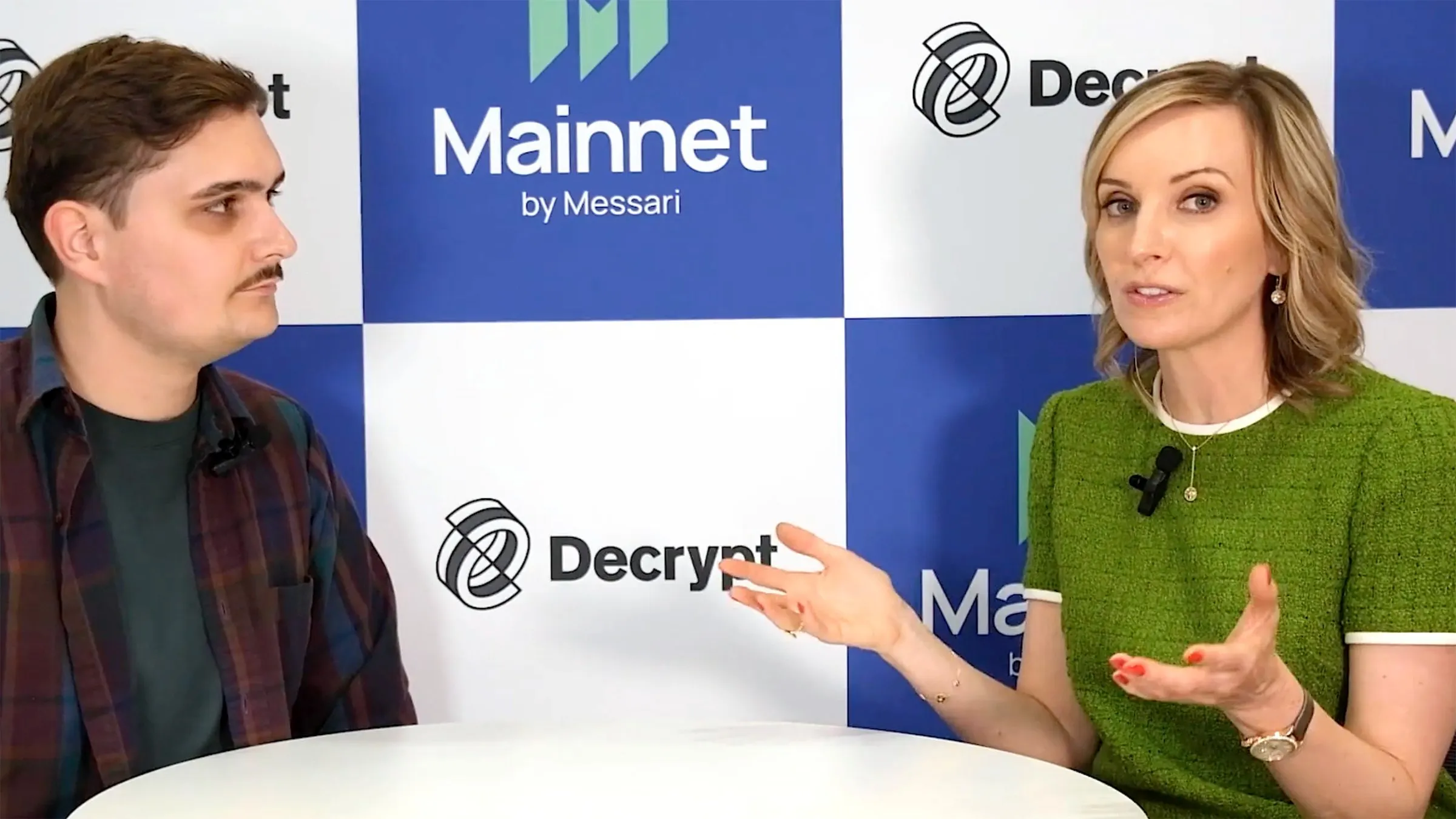“Let innovation happen,” said Kristin Smith, CEO of the Blockchain Association, arguing that rules and regulations surrounding stablecoins and cryptocurrency are often counterproductive.
Smith sat down with Decrypt at this year’s Messari Mainnet in New York City to discuss what the digital assets industry is dealing with in regards to the U.S. regulatory environment.
Stablecoins are tokens pegged 1:1 with a fiat currency, like the U.S. dollar. The idea is that they remove volatility, and their price moves in accordance with whichever currency they are linked to. USDT and USDC are the largest and most widely used stablecoins on the market.
Beyond stablecoins, regulators in the United States have been mostly a hindrance to the digital assets industry as a whole. And although crypto advocates inhabit Congress (scoring a win this week), parliament has been slow to adopt any semblance of a legal framework for the industry—leading some to say it is falling behind its international counterparts.
Remounting us to 2019, when the infamous and now-defunct Libra project announced its arrival, Smith told Decrypt this was when the government started taking an interest in stablecoins and to a wider extent, crypto.
Going back to the Trump administration and into Biden’s current government, Smith said, “There has been an urging for Congress to pass stablecoin legislation.”
However, nothing has prospered after an initial bipartisan effort led by previous House Financial Services Committee Chair Maxine Waters (D-CA) and Ranking Member Patrick McHenry (R-NC).
And that’s despite the fact, according to Smith, that stablecoins can help cement the U.S. dollar's placeholder as a world reserve currency. As she pointed out, “They are wrappers for the U.S. dollar.”
McHenry and Waters' committee roles have since inverted (with the former accusing Waters of blocking legislative action), with McHenry adamantly picking up the conversation.
The head of the Blockchain Association explained that he had approached his congressional counterparts team and two regulatory agencies with less-than-friendly crypto agendas: the Federal Reserve and the U.S. Treasury.
The conversation, nonetheless, has advanced, explained Smith. But, 50 obstacles allegedly stand in the way of a process that she says “is 90% there.”
“What the role of states will be has been a stumbling block,” Smith claims. Although she says they want an opportunity to regulate the space, U.S. regulators at a federal level are saying otherwise. “In a perfect world, the Fed would like to have complete control,” said the executive.
For Smith, the fact that the government is stalling legislation could be a sign of problems not only for the industry but the advancement of technology as a whole.
“If we need for the government to create a framework, it will not allow for very good innovation,” she told Decrypt.
Smith isn’t a staunch opponent of legislation, however. She acknowledges that the average person will think of the FTX collapse when talking about crypto, and this will require some consumer protections. “If I am going to give my money to some intermediary,” she said, “Are they going to safeguard it?”
The conversation around stablecoins is far from over, although challenges abound. “There are people in congress that didn’t grow up using the internet every day,” Smith told Decrypt, delineating what she considers the biggest effort the industry has to make: “Explaining these innovations.”
Concluding on a cheery note, Smith reckons, “There is a pathway to get legislation passed this year.”

